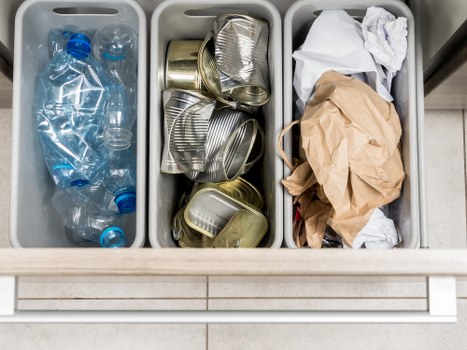Comprehensive Guide to Construction Waste Clearance in Barbican
Understanding Construction Waste Clearance

Construction projects inevitably generate a significant amount of waste. Efficient construction waste clearance in Barbican is essential not only for maintaining a clean and safe worksite but also for complying with local regulations and promoting sustainability.
Proper waste management ensures that debris, unused materials, and hazardous substances are disposed of responsibly. This process minimizes environmental impact and contributes to the overall success of construction projects.
In Barbican, a bustling area with numerous construction activities, the demand for reliable waste clearance services is high. Understanding the nuances of waste management in this locality can help businesses and contractors streamline their operations.
Types of Construction Waste

Construction waste encompasses a wide range of materials, each requiring specific handling and disposal methods. Common types include:
- Concrete and Masonry: These materials make up a significant portion of construction waste and require specialized recycling facilities.
- Wood: Includes offcuts, pallets, and untreated wood, which can often be repurposed or recycled.
- Metals: Steel, aluminum, and other metals can be melted down and reused in various applications.
- Plastics: Used in piping, formwork, and insulation, plastics need to be sorted and processed appropriately.
- Hazardous Waste: Materials like asbestos, paints, and solvents require careful handling and disposal to prevent environmental contamination.
Understanding these categories helps in planning effective waste clearance strategies, ensuring that each type of waste is handled in compliance with local regulations.
Proper segregation at the site can significantly enhance the efficiency of the waste clearance process, reducing costs and minimizing the environmental footprint.
Importance of Professional Waste Clearance Services

Engaging professional construction waste clearance services in Barbican offers numerous benefits:
- Efficiency: Professionals have the expertise and equipment to clear waste swiftly and effectively, minimizing project delays.
- Compliance: They ensure that all waste is disposed of according to local laws and environmental regulations.
- Safety: Proper handling and disposal of waste reduce the risk of accidents and environmental hazards on site.
- Environmental Responsibility: Professional services often incorporate recycling and sustainable practices, reducing the overall environmental impact.
- Cost-Effectiveness: While there is an upfront cost, professional services can save money in the long run by avoiding fines and optimizing waste disposal processes.
Choosing the right waste clearance partner can make a significant difference in the smooth execution of construction projects in Barbican.
Moreover, a reliable service provider can adapt to the specific needs of different projects, offering customized solutions that align with project timelines and budgets.
Steps Involved in Construction Waste Clearance

Effective construction waste clearance involves several key steps:
1. Waste Assessment
Initially, a comprehensive assessment of the waste generated is conducted. This helps in categorizing the waste and determining the appropriate disposal methods.
2. Segregation
Waste is segregated on-site into different categories such as recyclable, hazardous, and general waste. This separation facilitates efficient disposal and recycling.
3. Collection and Transportation
Segregated waste is collected and transported to designated recycling centers or disposal facilities by licensed waste clearance companies.
4. Recycling and Disposal
Recyclable materials are processed accordingly, while non-recyclable waste is disposed of in compliance with environmental regulations.
5. Documentation and Compliance
Proper documentation is maintained to ensure that all waste clearance activities comply with local laws and regulations, providing transparency and accountability.
Following these steps ensures a systematic approach to waste management, promoting sustainability and efficiency in construction projects.
Regulations Governing Waste Clearance in Barbican

Understanding and adhering to local regulations is crucial for effective waste clearance. In Barbican, several regulations govern the disposal and management of construction waste:
- Environmental Protection Act: This act mandates proper waste disposal to prevent environmental degradation.
- Waste Framework Directive: It sets the guidelines for waste management and recycling practices across regions.
- Local Council Regulations: Barbican's local council may have specific requirements for waste clearance, including permits and reporting obligations.
- Health and Safety Standards: Ensures that waste clearance operations adhere to safety protocols to protect workers and the public.
Non-compliance with these regulations can result in hefty fines and project delays. Therefore, partnering with a licensed and experienced waste clearance service is essential to navigate the regulatory landscape effectively.
Staying updated with any changes in legislation also helps in maintaining compliance and implementing best practices in waste management.
Benefits of Recycling Construction Waste

Recycling construction waste offers multiple advantages:
- Environmental Protection: Reduces the volume of waste sent to landfills, conserving natural resources and minimizing pollution.
- Cost Savings: Recycling can lower disposal costs and sometimes generate revenue from selling recyclable materials.
- Resource Efficiency: Reusing materials decreases the need for new raw materials, fostering sustainable construction practices.
- Compliance: Meets regulatory requirements for waste reduction and sustainable practices.
- Corporate Responsibility: Enhances the company's reputation by demonstrating a commitment to environmental stewardship.
Implementing robust recycling protocols within construction projects in Barbican can lead to long-term sustainability and operational efficiency.
Moreover, adopting recycling practices aligns with global efforts to promote a circular economy, where materials are continuously reused and repurposed.
Choosing the Right Waste Clearance Service in Barbican

Selecting a reliable construction waste clearance service in Barbican is pivotal for the success of your project. Consider the following factors:
- Experience and Expertise: Ensure the company has a proven track record in managing construction waste effectively.
- Licensing and Certification: Verify that the service provider holds the necessary licenses and adheres to industry standards.
- Range of Services: Look for comprehensive services that cover all aspects of waste clearance, from assessment to disposal.
- Recycling Capabilities: A good service provider should offer recycling options to minimize environmental impact.
- Customer Reviews and Reputation: Positive feedback and a solid reputation indicate reliability and quality service.
Taking the time to evaluate potential partners ensures that you choose a service that aligns with your project's needs and sustainability goals.
Additionally, transparent communication and responsive customer service are indicators of a service provider's commitment to client satisfaction.
Cost Factors in Construction Waste Clearance

Understanding the cost structure of waste clearance is essential for budgeting. Several factors influence the overall cost:
- Volume of Waste: The amount of waste generated directly affects the cost of clearance.
- Type of Waste: Hazardous or non-recyclable waste may incur higher disposal fees compared to recyclable materials.
- Accessibility of the Site: Difficult-to-access locations may require specialized equipment or additional labor, increasing costs.
- Timeline: Urgent clearance requests can lead to premium pricing.
- Service Provider: Different companies offer varying pricing structures based on their expertise and service quality.
Obtaining detailed quotes and understanding what is included can help in making informed decisions and avoiding unexpected expenses.
Negotiating contracts that clearly outline the scope of work and pricing can further ensure cost-effectiveness and transparency.
Environmental Impact of Construction Waste

The environmental consequences of improper construction waste management are profound:
- Landfill Overuse: Excessive waste leads to the rapid depletion of landfill space, posing long-term sustainability challenges.
- Pollution: Improper disposal can contaminate soil and water sources, affecting ecosystems and human health.
- Resource Depletion: Discarding reusable materials leads to unnecessary extraction of new resources, increasing environmental strain.
- Greenhouse Gas Emissions: Decomposing waste in landfills releases methane, a potent greenhouse gas contributing to climate change.
- Biodiversity Loss: Habitat disruption from waste accumulation can threaten local wildlife and biodiversity.
Minimizing the environmental impact through effective waste clearance and recycling is not only a regulatory requirement but also a moral imperative for construction projects in Barbican.
Adopting sustainable practices can also enhance a company's reputation and appeal to environmentally conscious clients and stakeholders.
Innovative Solutions in Waste Clearance

Advancements in technology have introduced innovative solutions for construction waste clearance:
- Automated Sorting Systems: Utilize AI and robotics to efficiently segregate waste, increasing accuracy and speed.
- Recycling Technologies: Advanced methods for processing materials like concrete and plastics into reusable forms.
- Waste Tracking Software: Enables real-time monitoring of waste generation and disposal, enhancing transparency and accountability.
- On-Site Processing: Reduces transportation costs and emissions by processing waste directly at the construction site.
- Modular Waste Management: Flexible systems that can be adapted to different project sizes and types.
Implementing these innovative solutions can significantly enhance the efficiency and sustainability of waste clearance operations in Barbican.
Continuous investment in technology ensures that waste management practices remain effective and environmentally friendly.
Future Trends in Construction Waste Management

The landscape of construction waste clearance is evolving, with several trends shaping the future:
- Circular Economy Integration: Emphasizing the reuse and recycling of materials to create a closed-loop system.
- Smart Waste Management: Leveraging IoT and data analytics to optimize waste collection and processing.
- Green Building Standards: Increasingly stringent requirements for sustainable construction practices.
- Biodegradable Materials: Adoption of materials that have a lower environmental footprint and easier disposal options.
- Collaborative Platforms: Enhanced coordination between stakeholders for more efficient waste management.
Staying abreast of these trends allows construction companies in Barbican to adopt proactive strategies, ensuring long-term sustainability and regulatory compliance.
Embracing these future-oriented practices can also provide a competitive edge in a market increasingly focused on environmental responsibility.
Conclusion
Effective construction waste clearance in Barbican is a critical aspect of successful construction projects. By understanding the types of waste, regulatory requirements, and the benefits of professional services, businesses can ensure efficient, compliant, and sustainable waste management practices.
Embracing recycling and innovative solutions not only minimizes environmental impact but also contributes to cost savings and enhanced operational efficiency. As the industry evolves, staying informed about future trends and adopting best practices will be essential for maintaining competitiveness and promoting sustainability.
Contact us today to manage your construction waste clearance needs efficiently and sustainably in Barbican.